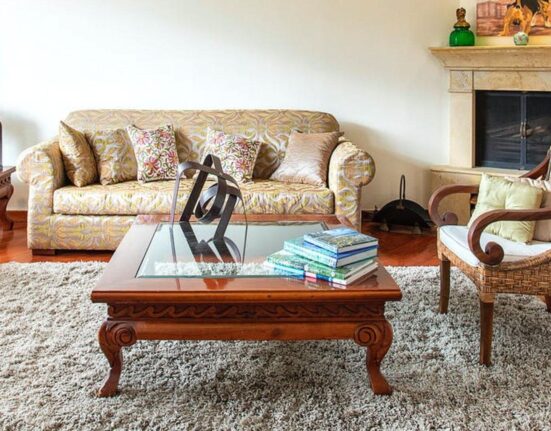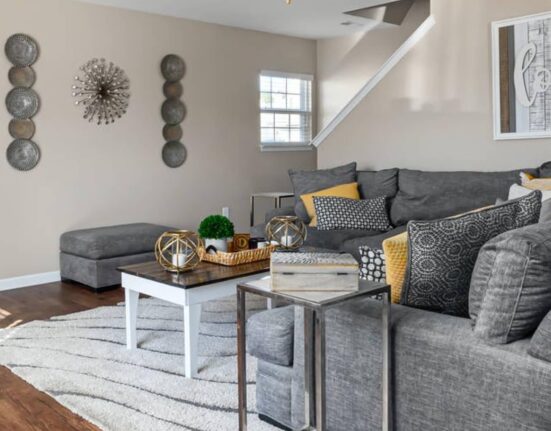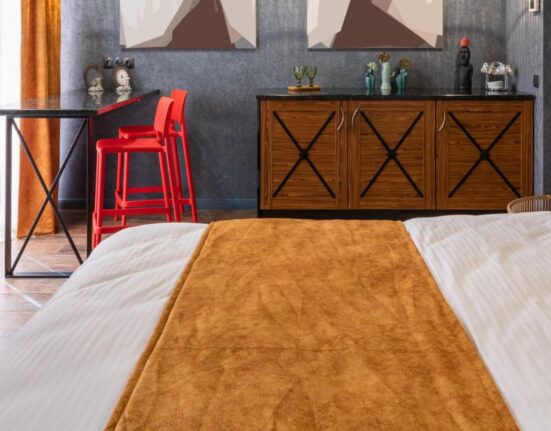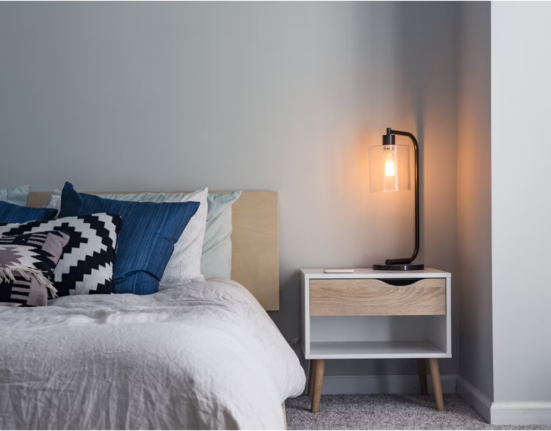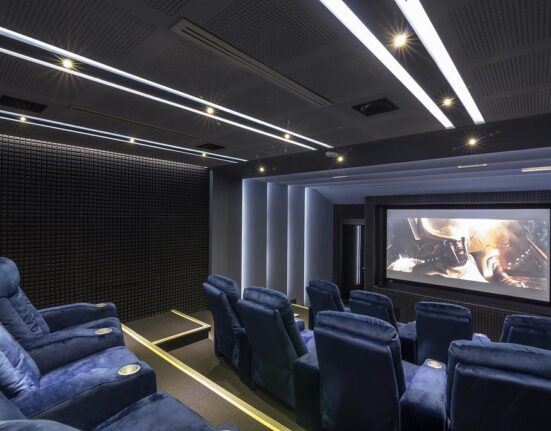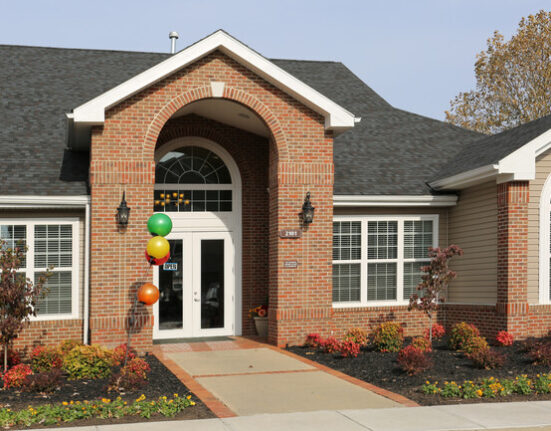Creating a unique interior design aesthetic goes beyond sticking to one style—it’s about blending different influences to create a space that feels personal and cohesive.
In 2024, the revenue in the Living Room Furniture market in the United States amounts to US$73.08 billion, highlighting the significant investment many people make in creating their ideal living spaces.
Whether you’re drawn to modern design’s sleek lines, traditional elements’ rustic charm, or classic decor’s timeless elegance, blending different styles can create a stunning, harmonious living space.
By thoughtfully integrating textures, colors, and furnishings, you can create a home that not only reflects your individual taste but also enhances your lifestyle.
In this blog, we’ll explore practical steps for mixing styles effectively, with expert tips from the design pros at Star Furniture to help you master the art of blending styles seamlessly.
Understand Your Core Style and Personality
Identify Your Preferred Style
- Begin with self-reflection to understand your design preferences.
- Consider whether you’re drawn to the sleek lines of modern design, the rustic charm of farmhouse aesthetics, or the eclectic vibes of bohemian decor.
- Explore furniture stores to get inspiration and determine your core style preferences to guide your decorating decisions and create a space that feels uniquely yours.
Analyze Your Existing Space
- Assess your current living environment.
- Identify and keep pieces you love.
- Use this inventory as a basis for deciding on new additions to your space.
Personalize Your Space
- Incorporate items with personal significance (e.g., family heirlooms, souvenirs from travels).
- Add elements that tell a unique story and make the space distinctly yours.
Create a Cohesive Color Palette
Select a Base Color Scheme
Starting with a neutral base is a sound strategy. Neutrals like grays, beiges, and whites can unify disparate furniture styles and serve as a backdrop that allows your furniture to shine.
Incorporate Accent Colors
Introduce accent colors through accessories like pillows, rugs, or art. These pops of color can define zones, highlight features, and add depth to your rooms without overpowering the mix of furniture styles.
Use Color to Unify Styles
Ensure that even the most diverse pieces have at least one color in common. This trick can help create a visually cohesive space, tying together different eras and styles smoothly.
Balance Proportions and Scale
Understand the Importance of Scale
- Mix large and small items, tall and short pieces to create balance and avoid a cluttered or sparse look.
- Make sure each piece is sized and positioned to keep the room well-proportioned and comfortable.
Play with Different Heights and Sizes
- Mix furniture heights to add interest and depth, such as pairing a low sofa with tall accent chairs or a tall cabinet with a short coffee table.
Focus on Room Layout
- Arrange furniture to facilitate conversation and movement.
- Ensure the layout is practical and inviting, promoting a natural flow throughout the space.
Mix Textures and Materials
Combine Different Materials
Wood, metal, glass, and fabric can coexist beautifully. A glass coffee table, a plush rug, sleek metal chairs, and a wooden bookshelf can all work together if arranged thoughtfully.
Incorporate Various Textures
Textures add visual weight and sensory warmth to a space. A leather sofa and a velvet ottoman, for example, can invite touch and add richness to your living room.
Create Focal Points with Texture
Use texture to create focal points in your rooms. A textured wall hanging or a shaggy rug can draw the eye and serve as a central feature around which other elements are arranged.
Blend Different Eras and Styles
Curate a Mix of Eras
- Embrace the blend of different design eras to create a dynamic and layered space.
- Pairing items from different eras, like a sleek mid-century modern chair with a traditional carved wooden table, adds depth and character to your room.
- This mix allows you to create a space that reflects diverse influences and tells a unique story, rather than sticking to a single design period.
Use Transitional Pieces
- Incorporate items that bridge different styles and eras, helping to create a cohesive look.
- Transitional pieces, like a contemporary lamp on an antique desk, can connect elements through shared design motifs, colors, or textures.
- These pieces act as mediators, smoothing the integration of contrasting styles and ensuring a more harmonious overall appearance.
Experiment with Style Combinations
- Mix unexpected styles, such as industrial with Scandinavian or coastal with bohemian, to achieve a fresh and unique look.
- Experimentation is crucial in finding combinations that resonate with your personal taste and make your space feel distinctive.
- Play with various design elements to see how different styles interact and create a space that truly reflects your style preferences.
Anchor the Room with Statement Pieces
Choose a Dominant Piece
- Select a large, visually impactful item, such as a striking piece of art, a bold-colored sofa, or an intricate rug.
- This dominant piece should be something you love and that will set the tone for the rest of the room.
Build Around the Statement
- Choose additional furniture and decor that complement the dominant piece.
- These items don’t need to match exactly but should enhance and harmonize with the anchor piece.
- Incorporate a mix of styles if desired, but ensure they work together cohesively.
Balance Statement with Subtlety
- Mix the bold statement piece with other old dark color items or secondary colors to use in conjunction with them.
- For instance, a colorfully upholstered armchair can be accompanied by simpler and more neutral pieces of furniture.
- This is because having everything share the same intensity makes it difficult for any one aspect to be particularly noticeable.
Incorporate Personal Touches and Accessories
Use Art and Decor Thoughtfully
Art and decor are key to unifying diverse styles and expressing your personality. Choose pieces that reflect your interests, such as unique artwork or cherished objects. Place them thoughtfully to highlight and blend different design elements.
For instance, a bold painting can serve as a focal point, while smaller decor items can create visual interest. Thoughtful selection and placement ensure that art and decor enhance your space, creating a harmonious and personal atmosphere.
Layer with Accessories
Accessories like throws, cushions, and rugs can add layers of color, texture, and style. They’re also easily changeable, allowing you to update your look with the seasons or as your tastes evolve.
Rotate and Update
Keep your space dynamic by periodically swapping out accessories or moving pieces around. This keeps the room feeling fresh and allows you to experiment with new combinations and placements.
Maintain Visual Balance and Harmony
To achieve a well-balanced and visually pleasing space, distribute visual weight evenly by pairing heavier pieces with lighter ones throughout the room. This approach helps prevent any area from appearing too crowded or too sparse.
Avoid the temptation to fill every corner; leaving some open space allows your furniture and decor to breathe and enhances the overall impact. Experiment with both symmetrical and asymmetrical arrangements to create visual interest and movement.
Symmetry can provide a sense of calm and order, while asymmetry introduces spontaneity and focal points, adding dynamic elements to your space.
Final Thoughts
By combining different types of furniture found in any one house may you be able to get distinctiveness in your own home. You can certainly pull off a room that is original to you by knowing and implementing these fundamentals of design. Mix and balance are essential when combining various elements such as color, texture or period.
Frequently Asked Questions (FAQs)
Can you mix and match different furniture styles?
It is possible to create an individualized and distinctive home decor by combining various types of furniture styles.
How do you mix different styles in a design?
To mix different styles, use a consistent color palette, balance scale and proportions, and blend textures and materials.
How do I choose an aesthetic for my house?
Choose a house aesthetic by considering your personal style preferences, lifestyle needs, and the architectural elements of your home.



